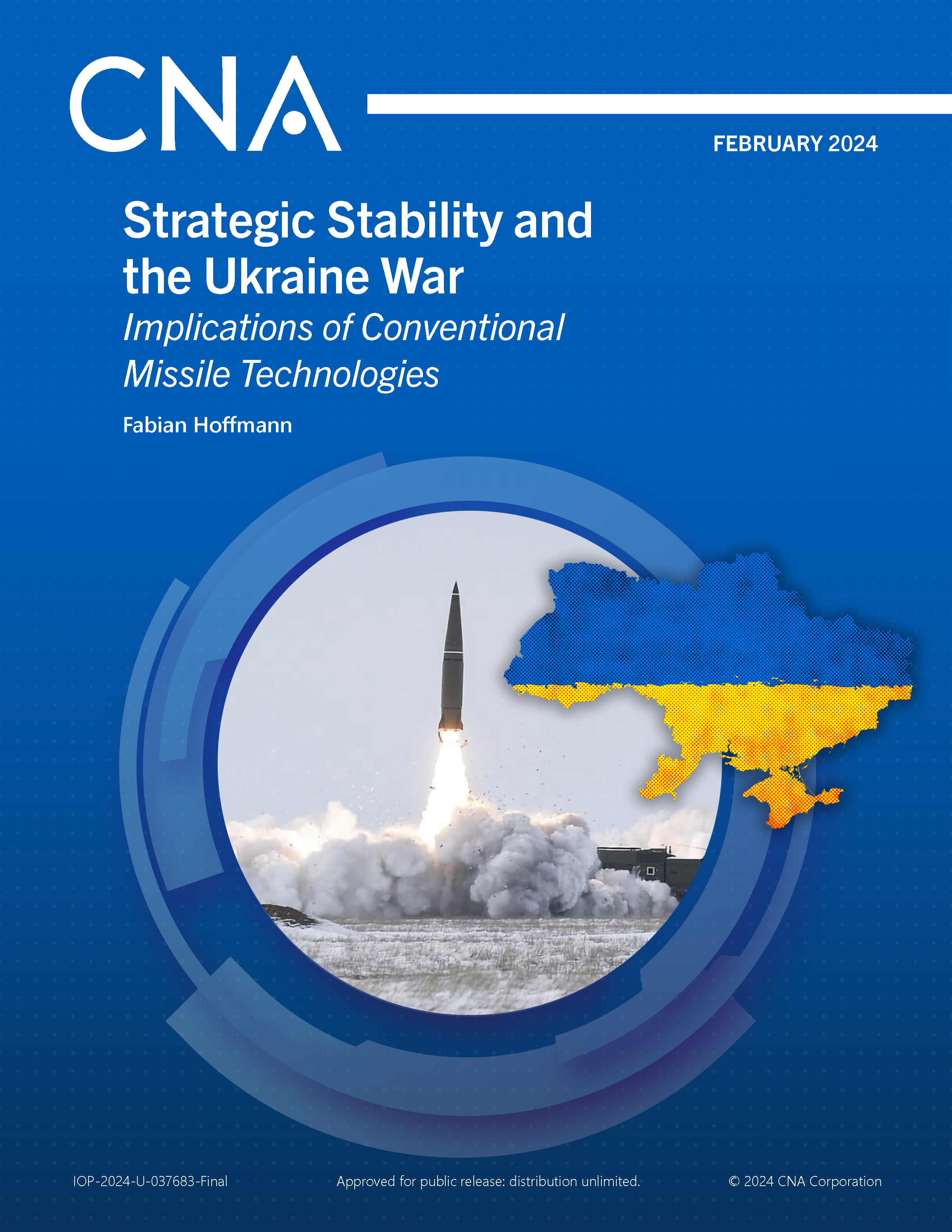The Russia‑Ukraine war marks the first instance of a major inter‑state war involving the large‑scale deployment and use of conventional ballistic and cruise missile technology. As a result, the Ukrainian theater has become a test bed for missile technology and strategy and has revealed the strengths and weaknesses of contemporary missile forces and doctrines. The implications of the deployment and use of offensive conventional missile capabilities and defenses against such capabilities in Ukraine extend beyond the battlefield and affect the broader strategic competition between Russia and the North Atlantic Treaty Organization (NATO). This paper explores those implications, asking how the deployment and use of long‑range strike weapons and missile defense systems in Ukraine affects Russia‑NATO strategic stability.
In this analysis, long‑range strike weapons include Russian, Ukrainian, and Western conventional cruise and ballistic missiles as well as conventional long‑range drones that have been used by both sides to engage targets at standoff range, including deep inside the adversary’s homeland territory. The meaning of standoff range is context dependent and relates to the distance between adversaries. In the context of the Russia‑Ukraine war (and in the broader European context), standoff implies the ability to engage targets several hundred kilometers behind the front line. In terms of missile defense, this analysis considers Russian, Ukrainian, and Western nonstrategic air and missile defense forces that have been deployed around the front line and deeper inland to protect military and civilian targets.
The paper is structured as follows. In section one, we briefly discuss the concept of strategic stability, conceptualizing it in terms of crisis and arms race stability. We also draw attention to the effect of long‑range strike weapons and missile defense on strategic stability and outline the implications that the deployment and use of conventional missile technology in Ukraine can have for strategic stability. In section two, we analyze offensive and defensive developments in the missile domain in Ukraine. We then briefly describe the different long‑range strike and missile defense systems that have been employed by Ukraine and Russia and assess their effectiveness (and lack thereof) in the war so far. Section three analyzes the medium‑to long‑term implications of the deployment and use of long‑range strike weapons and missile defense systems in Ukraine for strategic stability. Demonstrated levels of effectiveness and ineffectiveness of these weapon systems shape the prospects of crisis and arms control stability as well as the general likelihood of strategic nuclear exchanges between NATO and Russia.
Download reportApproved for public release. Unlimited distribution.
Details
- Pages: 38
- Document Number: IOP-2024-U-037683-Final
- Publication Date: 2/22/2024
